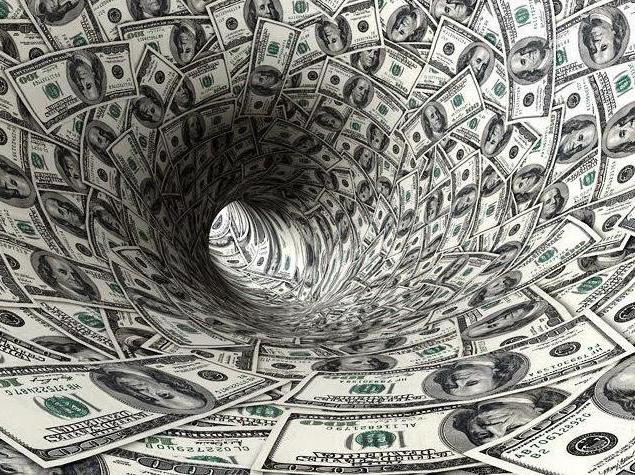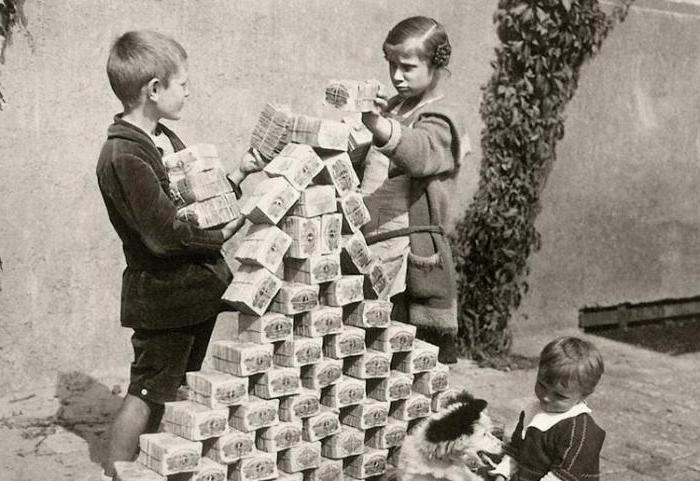Hyperinflation is a separate type of situation in which commodity and money circulation collapse, and the financial system collapses. Money no longer inspires confidence and it’s hard for people to figure out what will happen tomorrow. About this process taking place in the world, we learn further from the article.
Malware
The consequences of hyperinflation include the loss of money of its natural role, they no longer support the economy as a cost equivalent, do not make the circulation of goods and services fair and tantamount, do not adequately accumulate resources and make payments. There are all the signs of a crisis covering the country.
 Hyperinflation is a process followed by a default arising from excessive debt. Bankruptcy is becoming widespread. Barter increases as much as possible. Rising prices are forcing people to reduce the use of monetary units. The population is rapidly impoverished, losing the ability to accumulate resources.
Hyperinflation is a process followed by a default arising from excessive debt. Bankruptcy is becoming widespread. Barter increases as much as possible. Rising prices are forcing people to reduce the use of monetary units. The population is rapidly impoverished, losing the ability to accumulate resources.
Precedents in History
Glancing at historical chronicles, we will clearly understand what hyperinflation is. Its examples were observed in Russia at the time when the Civil War was going on. This process also affected Germany in the early 1920s. Hyperinflation is a phenomenon due to which barter prevails over money circulation. This process is spurred by a number of factors. The causes of hyperinflation also lie in the increased use of liquid goods. Thus, you can not depend on money.
Rising prices stimulate the use of freely traded currencies. There is a circulation of noble metals. Hyperinflation is a period when even sugar, alcohol and cigarettes can act as a payment equivalent, which in itself indicates an extremely weak state of the economy.
The dollar is becoming more popular. Foreign currency is widely used in domestic operations in various industries. Such precedents occurred in the 20th century, as well as in 2008, when the US dollar was actively used. Perhaps even a complete crowding out of national money. So it was in Zimbabwe.

What to do with it?
In this situation, people are actively looking for ways to solve this situation. Some entrepreneurs are starting to get involved in construction, buy Turkish raw materials and build houses. Real estate allows you to invest in materials and accumulate them, use at the right time. In this way they stockpile and are not affected by future price fluctuations.
The consequence of hyperinflation is the hype in which people buy what they absolutely do not need. Seeing that demand is increasing, sellers are increasing the cost, which still requires more to be paid than is actually required.
The decline in the money circulation system, the loss of the value of savings and debt bonds leads to economic degradation. Product production is declining, prices are rising, as supply has declined.

Ways to overcome
There are several ways to get rid of hyperinflation: administrative as well as economic. The first group of methods implies that the state will set special restrictions in connection with which it will not be possible to raise prices and wages above a given level. Thus, price growth is effectively restrained.
However, this is fraught with clandestine inflation, eluding central control.Market mechanisms are blocked, the economy is faced with obstacles, progress in many sectors stops, crisis phenomena are not overcome naturally, due to which the transition stage is delayed.
In this regard, it is better to resort to economic methods that create such conditions when the desire and ability of entrepreneurs to increase the order of prices is eliminated.

Second way
This group of adjustment methods helps to influence the inflationary processes that occur with demand and costs.
There are two types of similar methods. The first is a set of actions opposing a monopoly. If the market is sufficiently competitive, supply increases, and the price level, on the contrary, drops. Overcoming the concentration of resources in one hand, you can contribute to the increase in goods in the market. Thus will be repaid cost inflation.
The second group of methods includes measures that reduce unit costs of production. Business taxes should be reduced, duties on imported goods should be reduced. It is important that the import of capital goods be seamless. A complex is used consisting of measures that stimulate progress in technology. Economic policy does not greatly affect how costs and overall supply change. Much better is this strategy affecting overall demand.
Necessary measures
A transition economy has a correlation between the rate of increase in prices and costs and demand. This leads to certain consequences. The higher the demand, the stronger the inflation of costs. Total increase should be limited or prevented altogether. Then begins the self-depreciation of the increase in costs.
 When production declines and unemployment rises, the scale of demand and the price of raw materials are limited. Nominal wages are increasing. Production costs are being held back. Inflationary trends provoked earlier are declining. This strategy is very important if you need to get rid of the current situation in the country related to the transition economy.
When production declines and unemployment rises, the scale of demand and the price of raw materials are limited. Nominal wages are increasing. Production costs are being held back. Inflationary trends provoked earlier are declining. This strategy is very important if you need to get rid of the current situation in the country related to the transition economy.
Budget expenditures should be reduced, and fiscal and monetary policies are designed to contain the processes that are destroying the economy.
Examples of the application of these measures are available in the history of Poland, as well as Czechoslovakia. There was a jump in prices, but after a few months the processes generated by liberalization were mitigated. The cost of goods gradually decreased by 1-5% per month.
Returning to 1992, it is worth recalling how in Russia from April to August inflation fell from 23 to 8%. It was possible to suppress the rapid growth in the value of goods. So by 1997, the indicators were only 1%.
